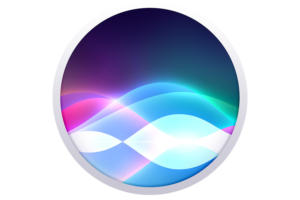Siri Shortcuts: Opening up Siri’s next chapter
In 2011, Apple announced that its newest iPhone would incorporate a brand new virtual assistant, based on an app developed by a company that Apple had acquired: Siri. This fall’s release of iOS 12 marks seven years since Siri’s debut, meaning that the virtual assistant would be roughly in first grade by now.
Over the intervening years, Siri has grown in fits and starts, expanding its features and its knowledge base, often with only a little fanfare from Apple. On rare occasions, Apple does devote some attention to the virtual assistant, such as when it produced a whole video dedicated to the relationship between action star—and impossibly cheerful human—Dwayne Johnson and the intelligent agent. But more often than not, Siri’s presented as a facet of Apple’s other products.
In iOS 12, Apple’s made perhaps the biggest improvement in Siri’s history, by adding the Siri Shortcuts feature. Shortcuts unlocks a lot of functionality for the virtual assistant and makes it truly customizable for the first time, but it also brings to light the virtual assistant’s frustrating shortcomings.
Power to the users
For the first time, Siri Shortcuts lets users actually tweak the virtual assistant to their liking, adding the ability for custom shortcuts that perform tasks which previous incarnations of the intelligent agent might not have been able to handle. And that customization runs deep: You only have to dip your toe into the work of folks like Federico Viticci to see how much is possible.
Since Siri’s inception, one of the biggest complaints it that it didn’t meaningfully interact with third-party apps, and Shortcuts helps remedy that. Dozens of prominent third-party apps have already updated to offer Shortcuts integration, and Apple’s doing its part by surfacing suggested shortcuts in the Settings app, helping even less technical users take advantage of the new abilities.
Combine those options with the ability to assign Siri phrases to any sort of complex workflow built in the Shortcuts app and you’ve got the potential for all sorts of new capabilities for the virtual assistant. I spent an evening earlier this week building a shortcut to help me scan in receipts for business expenses and log them in my own custom format, a workflow that I can trigger by telling Siri to “scan expenses.”
Being able to assign a custom keyword to a specific task or set of tasks is something that the Google Assistant and Amazon’s Alexa have been able to do for a while now, but Apple’s system is arguably more complex and powerful.
Mostly.
The missing ingredient
As promising as Siri Shortcuts is, it quickly becomes apparent that there are places where it doesn’t work as well as one would hope. Despite the power of the Shortcuts app—you can run shell scripts over SSH, link to apps for running Javascript or Python scripts, and even connect (with a little work) to the web service IFTTT—one major missing feature is the ability for Siri to recognize arbitrary input.
This is something that Siri does pretty well in its native form, thanks to its natural language processing. For example, you can tell Siri to set an alarm for a time—any time—and it’ll understand what you mean. Same with sending a text to someone, or making a phone call. But Siri Shortcuts doesn’t really have this ability because it’s purely pattern recognition: say this exact phrase in this way to execute this workflow. There’s nothing really new about this: even the classic Mac OS had a similar feature.
 Apple
AppleThis means that you can’t design Siri Shortcuts that accept variables. You can’t, say, make a workflow to send a form email to a contact that you specify when you issue the command. If you want a shortcut to play a specific podcast in Overcast, you need to create shortcuts for each individual show you might want to play. They really are “shortcuts” in the truest sense of the word—the Siri equivalent of a hotkey.
Siri Trek: The next generation
It’s understandable that Siri Shortcuts is kind of limited. In a way it’s there as a patch: a feature that buys Siri some more usefulness, possibly while Apple works from the other end to extend systems like the SiriKit integration it’s offered to third-party developers in a handful of categories. But that natural language processing of arbitrary, unstructured input is a challenge, potentially opening up a can of worms that Apple’s not ready to unleash.
At some point, though, Siri is going to have to push past this in order to continue its evolution. With the prevalence of Alexa, Google Assistant, Cortana, and even Bixby, it’s clear that virtual assistants are here to stay. And that future is going to involve these artificial intelligences being able to handle any information thrown at them in much the same way that a human assistant would.
Shortcuts is a powerful tool in Siri’s arsenal, and one whose usefulness will only increase over time as more third-party apps adopt it. But it’s just complex enough to make it apparent that a little more complexity is needed if we’re going to get to the next generation of virtual assistant technology.


